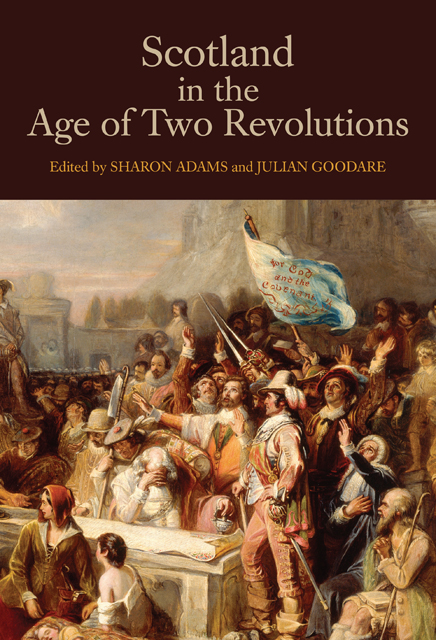Book contents
- Frontmatter
- Dedication
- Contents
- Figures and Tables
- List of Contributors
- Preface
- List of Abbreviations
- 1 Scotland and its Seventeenth-Century Revolutions
- 2 The Middle Shires Divided: Tensions at the Heart of Anglo-Scottish Union
- 3 The Western Highlands and Isles and Central Government, 1616–1645
- 4 The Scottish Bishops in Government, 1625–1638
- 5 The Scottish Revolution
- 6 In Search of the Scottish Republic
- 7 Highland Lawlessness and the Cromwellian Regime
- 8 The Worcester Veterans and the Restoration Regime in Scotland
- 9 The Political Thought of the Restoration Covenanters
- 10 Scottish State Oaths and the Revolution of 1688–1690
- 11 The Tribulations of Everyday Government in Williamite Scotland
- 12 The Company of Scotland and Scottish Politics, 1696–1701
- Chronology of Seventeenth-Century Scotland
- Further Reading
- Index
- Studies in Early Modern Cultural, Political and Social History
7 - Highland Lawlessness and the Cromwellian Regime
Published online by Cambridge University Press: 28 February 2023
- Frontmatter
- Dedication
- Contents
- Figures and Tables
- List of Contributors
- Preface
- List of Abbreviations
- 1 Scotland and its Seventeenth-Century Revolutions
- 2 The Middle Shires Divided: Tensions at the Heart of Anglo-Scottish Union
- 3 The Western Highlands and Isles and Central Government, 1616–1645
- 4 The Scottish Bishops in Government, 1625–1638
- 5 The Scottish Revolution
- 6 In Search of the Scottish Republic
- 7 Highland Lawlessness and the Cromwellian Regime
- 8 The Worcester Veterans and the Restoration Regime in Scotland
- 9 The Political Thought of the Restoration Covenanters
- 10 Scottish State Oaths and the Revolution of 1688–1690
- 11 The Tribulations of Everyday Government in Williamite Scotland
- 12 The Company of Scotland and Scottish Politics, 1696–1701
- Chronology of Seventeenth-Century Scotland
- Further Reading
- Index
- Studies in Early Modern Cultural, Political and Social History
Summary
The issue of ‘lawlessness’ is central to the history of the Scottish Highlands in the sixteenth and seventeenth centuries. King James VI decried Highland lawlessness, justifying his policies towards the region on the basis that it was a troublesome area that needed to be controlled. Increased official interest in the Highlands eventually led to the assimilation of the region into the cultural and social norms of the rest of Scotland and Britain. However, this lawlessness which justified government policy was not regarded only as a physical threat or as a problem of law and order. It symbolised the social and cultural differences between the Highlands and Lowlands and pointed to conflict between the two. These issues emerged in striking form during the Cromwellian occupation of Scotland in the 1650s.
I
Highland lawlessness drew its strength from its association with the structures of clanship. Chiefs maintained a retinue of warriors about their person, known to the clans as fine (clan gentry), and known to the government as sorners. These were usually younger members of the chief’s close kin group or of leading cadet families of the clan. Within the Highlands, their violence was regarded as an integral aspect of clan life. By denominating this violence as lawlessness, Lowlanders and the government demonstrated the hostility of their understanding of Highland society and their intention to attack it by undermining one of its important features. The Highlands were not substantially more violent than the Lowlands, but they were understood to be so. The denomination of Highland violence as lawlessness was the imposition of a subjective, negative assessment on Highland society. To declare that Highlanders were outside the law was also an assertion of power: it reinforced the claim of Scots legal norms over the Highlands and hinted at a project to bring it under control. Thus, the issue of lawlessness and the charged nature of this term are intrinsic not only to understanding the differences between the social structures of the Highlands and Lowlands, but also to understanding the relationship between the two regions. The matter of lawlessness in the Highlands – its extent, cultural or political significance, and the potential for comparison with similar phenomena in the Lowlands – has also given rise to historiographical debate, as shall be discussed below.
- Type
- Chapter
- Information
- Scotland in the Age of Two Revolutions , pp. 115 - 134Publisher: Boydell & BrewerPrint publication year: 2014

